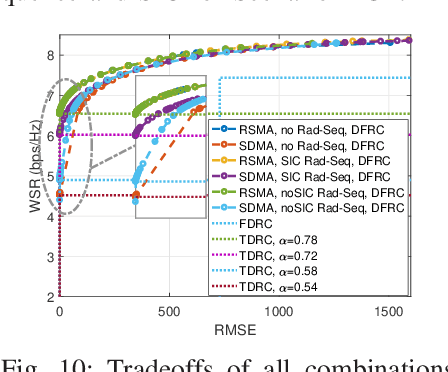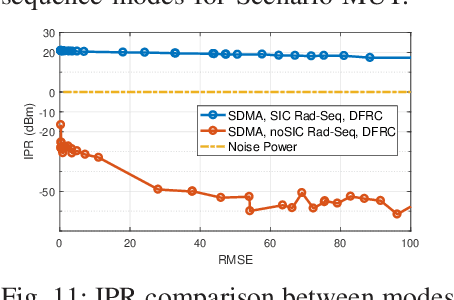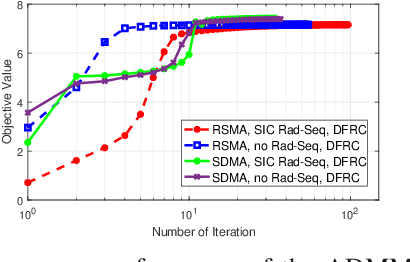Jianyun Zhang
Rate-Splitting Multiple Access for Multi-Antenna Joint Radar and Communications
Mar 14, 2021



Abstract:Dual-Functional Radar-Communication (DFRC) system is an essential and promising technique for beyond 5G. In this work, we propose a powerful and unified multi-antenna DFRC transmission framework, where an additional radar sequence is transmitted apart from communication streams to enhance radar beampattern matching capability, and Rate-Splitting Multiple Access (RSMA) is adopted to better manage the interference. RSMA relies on multi-antenna Rate-Splitting (RS) with Successive Interference Cancellation (SIC) receivers, and the split and encoding of messages into common and private streams. We design the message split and the precoders of the radar sequence and communication streams to jointly maximize the Weighted Sum Rate (WSR) and minimize the radar beampattern approximation Mean Square Error (MSE) subject to the per antenna power constraint. An iterative algorithm based on Alternating Direction Method of Multipliers (ADMM) is developed to solve the problem. Numerical results first show that RSMA-assisted DFRC achieves a better tradeoff between WSR and beampattern approximation than Space-Division Multiple Access (SDMA)-assisted DFRC with or without radar sequence, and other simpler radar-communication strategies using orthogonal resources. We also show that the RSMA-assisted DFRC frameworks with and without radar sequence achieve the same tradeoff performance. This is because that the common stream is better exploited in the proposed framework. The common stream of RSMA fulfils the triple function of managing interference among communication users, managing interference between communication and radar, and beampattern approximation. Therefore, by enabling RSMA in DFRC, the system performance is enhanced while the system architecture is simplified since there is no need to use additional radar sequence and SIC. We conclude that RSMA is a more powerful multiple access for DFRC.
Multi-Antenna Joint Radar and Communications: Precoder Optimization and Weighted Sum-Rate vs Probing Power Tradeoff
Jan 28, 2021



Abstract:In order to further exploit the potential of joint multi-antenna radar-communication (RadCom) system, we propose two transmission techniques respectively based on separated and shared antenna deployments. Both techniques are designed to maximize the weighted sum rate (WSR) and the probing power at target's location under average power constraints at the antennas such that the system can simultaneously communicate with downlink users and detect the target within the same frequency band. Based on a Weighted Minimized Mean Square Errors (WMMSE) method, the separated deployment transmission is designed via semidefinite programming (SDP) while the shared deployment problem is solved by majorization-minimization (MM) algorithm. Numerical results show that the shared deployment outperforms the separated deployment in radar beamforming. The tradeoffs between WSR and probing power at target are compared among both proposed transmissions and two practically simpler dual-function implementations i.e., time division and frequency division. Results show that although the separated deployment enables spectrum sharing, it experiences a performance loss compared with frequency division, while the shared deployment outperforms both and surpasses time division in certain conditions.
 Add to Chrome
Add to Chrome Add to Firefox
Add to Firefox Add to Edge
Add to Edge